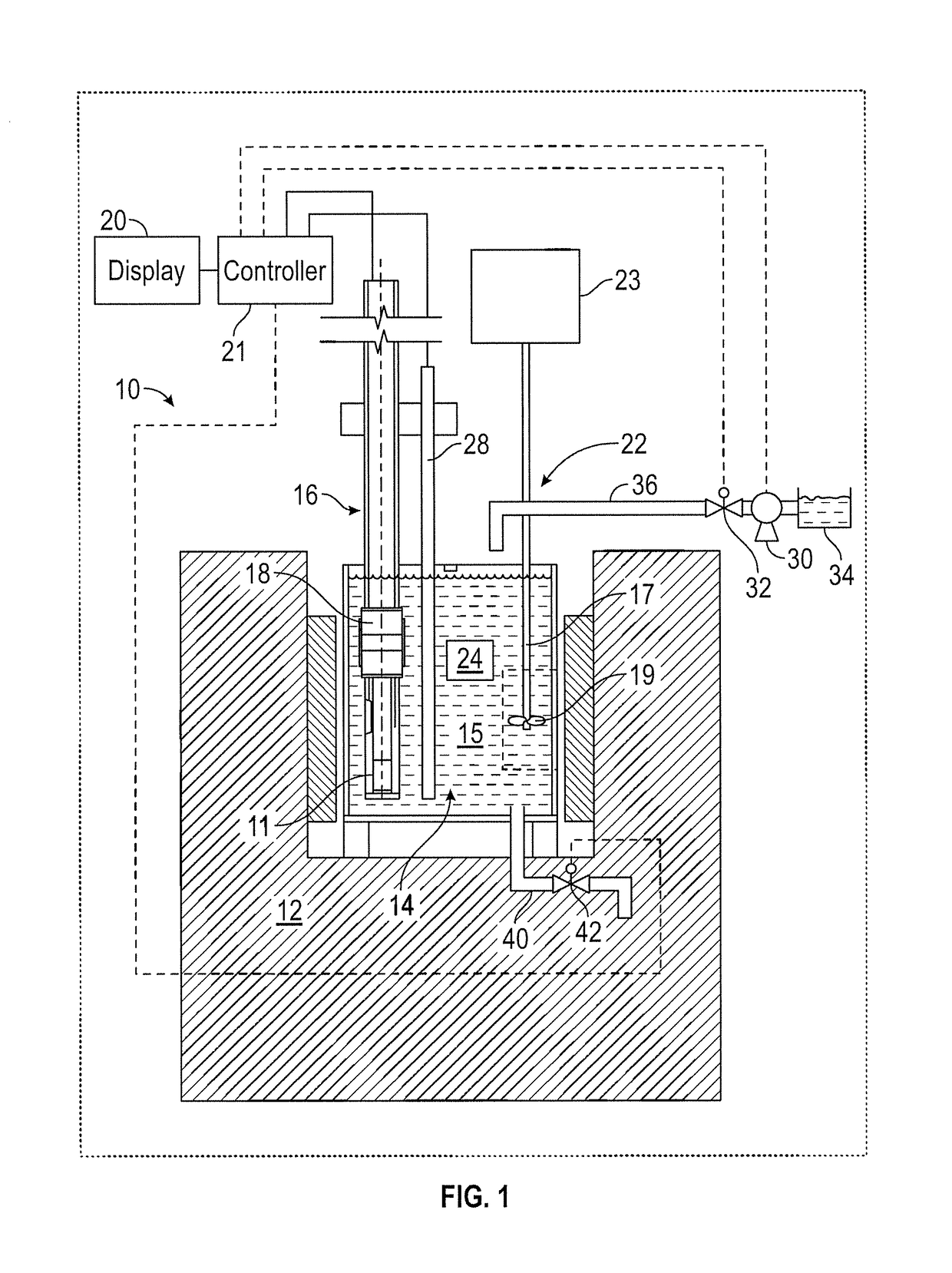Method for measuring and continuously monitoring the heat transfer characteristics of a fluid in a system
a technology of heat transfer characteristics and fluids, which is applied in the field of measuring and continuously monitoring the heat transfer characteristics of fluids in a system, can solve the problems of change in time-temperature profiles, microstructure and physical properties of quenched parts, and achieve the effect of effective heat transfer
- Summary
- Abstract
- Description
- Claims
- Application Information
AI Technical Summary
Benefits of technology
Problems solved by technology
Method used
Image
Examples
Embodiment Construction
[0010]Apparatus 10 includes a quenching station 12, wherein a quenching vessel 14 may be situated. The quenching vessel contains a sufficient volume of a suitable quenching fluid 15. The fluid is understood to be either a liquid or a gas, depending upon the quenching process needed to impart the desired properties into the quenched product 24.
[0011]The quenching fluid or quench medium can be a liquid such as water, brine, molten salt (e.g., sodium nitrate, sodium nitride, etc.), a mineral oil, or a vegetable oil. In some cases, mixtures of these and other liquids may be used. The quenching fluid or quench medium can also be a gas such as air, nitrogen or a nobel gas (e.g., helium, neon, argon, radon, krypton, xenon). In some cases, mixtures of these and other gases may be used.
[0012]The apparatus includes a probe body 16 and a heating element 18 in thermal communication with the probe body. Heating element 18 can be configured to have a fixed or varied input of energy and may be pla...
PUM
| Property | Measurement | Unit |
|---|---|---|
| temperature | aaaaa | aaaaa |
| temperature | aaaaa | aaaaa |
| temperature | aaaaa | aaaaa |
Abstract
Description
Claims
Application Information
 Login to View More
Login to View More - R&D
- Intellectual Property
- Life Sciences
- Materials
- Tech Scout
- Unparalleled Data Quality
- Higher Quality Content
- 60% Fewer Hallucinations
Browse by: Latest US Patents, China's latest patents, Technical Efficacy Thesaurus, Application Domain, Technology Topic, Popular Technical Reports.
© 2025 PatSnap. All rights reserved.Legal|Privacy policy|Modern Slavery Act Transparency Statement|Sitemap|About US| Contact US: help@patsnap.com


